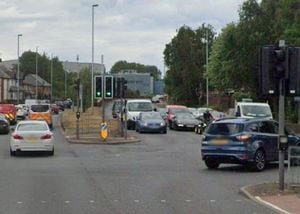Green light for next phase of Wolverhampton A454 improvements
The next stages of a major project to redevelop and improve traffic flow on Wolverhampton’s main A454 Willenhall Road have been given the green light by highways chiefs.

The road is the main route between the Wolverhampton city centre and Walsall.
Long-term plans to redevelop and enhance traffic flow along the City East Gateway, which also provides links to the Black Country Route and the M6 at Junction 10, were given the full backing of city council cabinet bosses this week.
The scheme will improve connectivity and accessibility to priority housing and employment sites already identified for regeneration, including Canalside, East Park and the Neachells industrial area.
More than 20,000 vehicles pass through the gateway route every day. It also provides essential access to 34,000 homes and 75,000 jobs and forms part of the West Midlands Key Route Network (KRN) and the national Major Road Network (MRN). It has been identified as being in need of improvements in the the region’s Well-Connected Communities Transport Capital Programme’s 2023-24 report.
The council’s cabinet resources panel has now approved a supplementary capital budget of £400,000 for the development of phases 1 and 2 of the route, which extends from Bilston Street Island through Middle Cross and Lower Horseley Fields, up to the Chillington Fields junction. It also incorporates Walsall Street and Lower Walsall Street.
West Midlands Combined Authority (WMCA) approved the project in December 2022. Phases 1 and 2 have provisionally been allocated £6 million of the total for the A454 City East Gateway corridor.
The West Midlands has received £1.05 billion from the City Region Sustainable Transport Settlements (CRSTS) fund, £18.2 million of which has been allocated to the A454 corridor including the Willenhall Road section.
Councillor Craig Collingswood, cabinet member for environment and climate change, told members: “The scheme looks to deliver enhancements to access for all road users, with active travel infrastructure and consistent journey times for public transport and other vehicles, supporting opportunities for residents and visitors to make their first choice for journeys a healthy and green one, but ensuring essential access for drivers is also supported.
"This programme will enable long-term transformation for this part of the city – and early projects will act as a catalyst for change, prosperity and regeneration of the area, bringing important social, economic and environmental improvements for the people of East Park.”
A refreshed outline business case will be submitted to the Department for Transport (Dft) later this year and a decision to confirm further CRSTS funding for the whole corridor is expected later in the year or early 2024.
